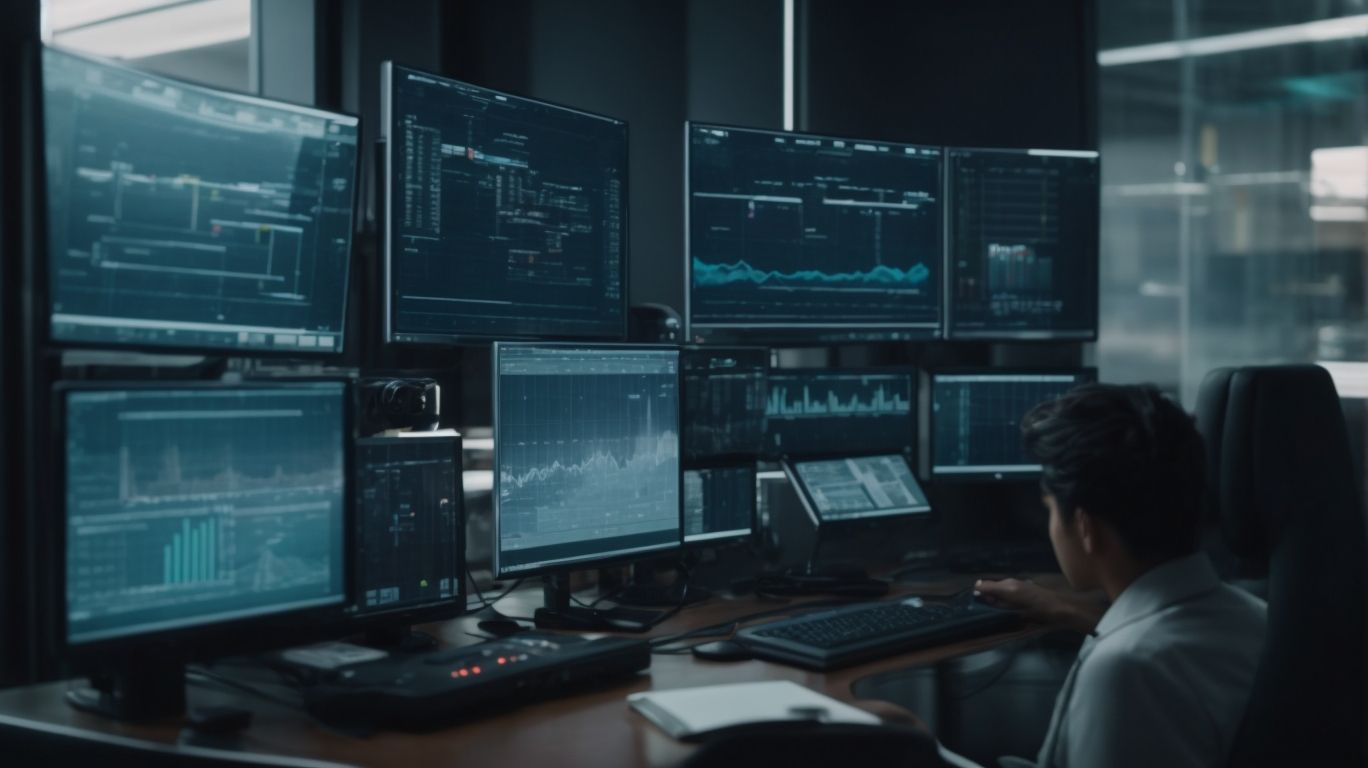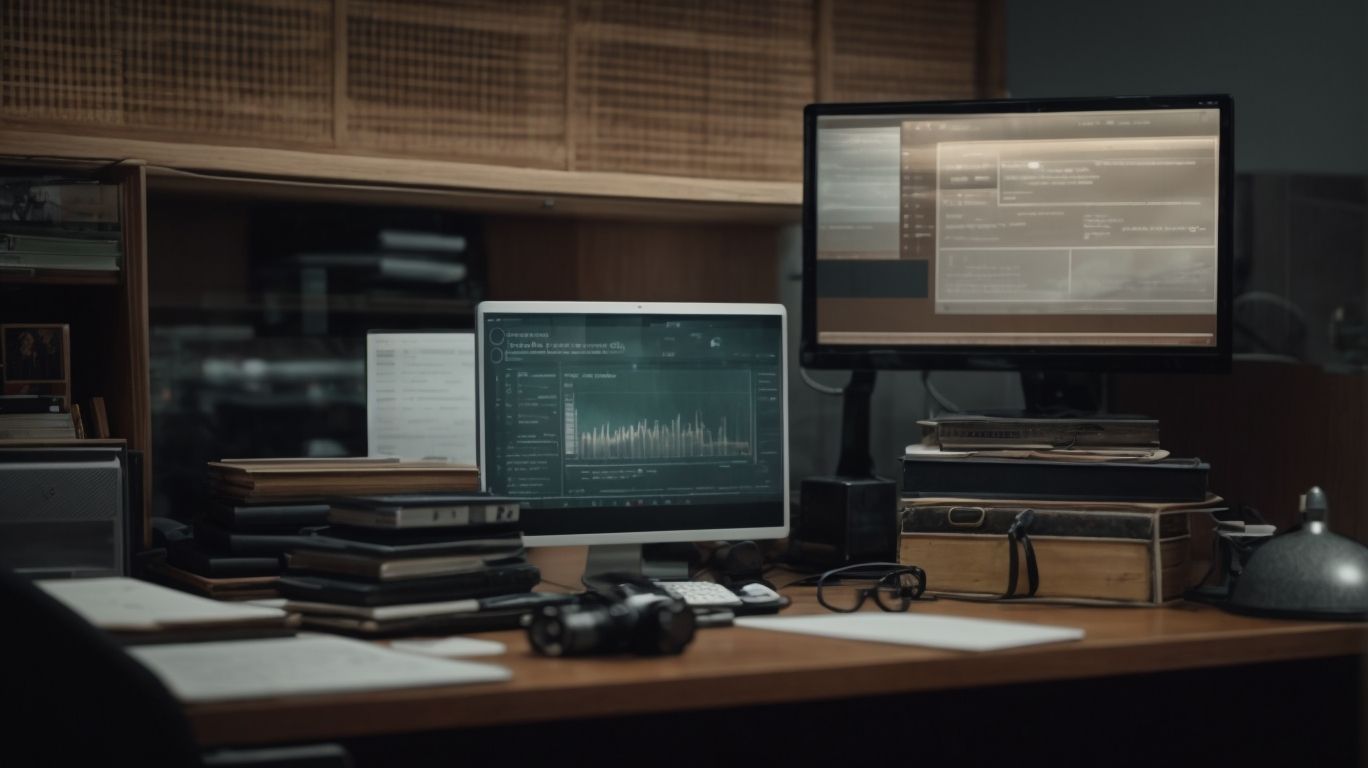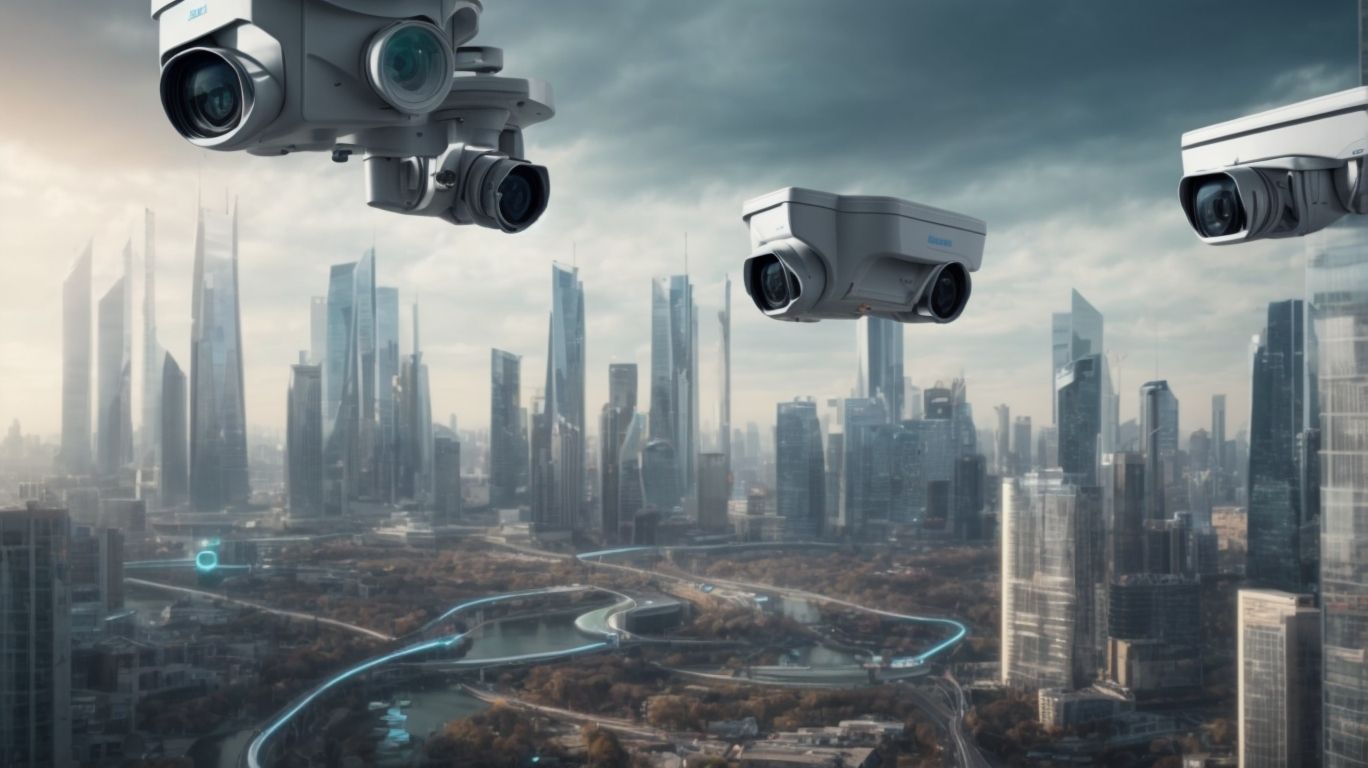.jpg)
Have you ever felt like someone is watching your every move? With the rise of government surveillance, that feeling may not be too far from reality. From physical surveillance to data monitoring, governments are employing various tools to keep a close eye on their citizens. But with this increased scrutiny comes concerns about privacy invasion, abuse of power, and discrimination.
In this article, we will explore the different types of government surveillance, the tools used, ethical concerns, benefits, current laws, and regulations, as well as ways to protect your privacy in this digital age. So, are you ready to uncover the truth about government surveillance?
What Is Government Surveillance?
Government surveillance refers to the monitoring, tracking, and recording of activities, communications, and behaviors of individuals or entities by government agencies or authorities in the interest of national security, law enforcement, or other purposes under the Constitution.
This practice has a deep-rooted history, dating back to ancient civilizations where rulers utilized spies to gather information. In the modern era, technological advancements have enabled sophisticated surveillance methods, raising concerns about infringing on privacy rights. Organizations like the American Civil Liberties Union (ACLU) play a crucial role in challenging excessive surveillance, advocating for legal reforms that safeguard individual liberties. The ACLU strives to promote transparency and accountability in surveillance practices to ensure that government actions align with constitutional principles and respect civil rights.
What Are The Types Of Government Surveillance?

Credits: Gme.Ee – Richard Lopez
Government surveillance encompasses various types of monitoring methods employed by authorities to gather information, observe activities, and track individuals or entities, using technology and resources to advance surveillance capabilities.
Physical surveillance involves the direct observation of individuals or locations by agents or officers, often using cameras, drones, or undercover officers.
Electronic surveillance utilizes devices like wiretaps, GPS trackers, and hidden cameras to intercept communications and monitor electronic activities.
Data surveillance focuses on collecting and analyzing digital information, including internet browsing history, social media interactions, and emails, raising concerns about mass data collection and privacy breaches.
Physical Surveillance
Physical surveillance involves the direct observation, monitoring, and tracking of individuals or entities by government agencies or authorities through physical means, such as stakeouts, tailing, and undercover operations, often raising constitutional questions addressed by the Supreme Court.
Within the realm of physical surveillance, there are various methods employed to gather information, including static surveillance points, mobile tracking devices, and hidden cameras disguised as everyday objects. These methods are utilized by law enforcement agencies to gather evidence and monitor suspects’ activities.
Legal considerations play a crucial role in ensuring that such surveillance methods adhere to constitutional rights, as highlighted in landmark cases like Katz v. United States, which established the expectation of privacy in certain locations.
Advancements in technology have revolutionized traditional surveillance techniques, introducing drones, facial recognition systems, and GPS tracking, raising new privacy concerns that warrant ongoing legal scrutiny.
Electronic Surveillance
Electronic surveillance involves the monitoring, interception, and collection of electronic communications, data, or information by government agencies or authorities using technological tools and methods, with oversight by entities like the FBI.
One of the key pieces of legislation that governs electronic surveillance in the United States is Section 702 of the Foreign Intelligence Surveillance Act (FISA). Section 702 authorizes the collection of foreign intelligence information from non-U.S. persons located outside the United States, but it is often criticized for its potential impact on the privacy rights of individuals. Law enforcement agencies play a crucial role in conducting electronic surveillance to prevent criminal activities and national security threats, but the balance between safeguarding privacy rights and ensuring national security is a constant point of debate.
Data Surveillance
Data surveillance involves the collection, analysis, and storage of digital information, including metadata, online activities, and communication records, by government entities for intelligence, law enforcement, or security purposes.
The extent of data surveillance reaches deep into various aspects of daily life, creating a web of digital footprints that can reveal a wealth of personal information. This pervasive monitoring encompasses not just emails and phone calls, but also social media interactions, browsing history, and location data.
Such extensive data gathering poses a significant threat to individual privacy, as the potential misuse or mishandling of this information can lead to a breach of rights and personal freedoms. Transparency and accountability are crucial in ensuring that data surveillance is conducted lawfully and ethically.
What Are The Tools Used For Government Surveillance?
Government surveillance employs a range of tools and technologies to monitor and gather information, including CCTV cameras, cellphone tracking systems, and social media monitoring platforms, raising concerns about privacy invasion and the need for transparency.
Organizations like the NSA and CIA utilize sophisticated software such as facial recognition technology and geolocation tracking to surveil individuals and track their movements. These tools can be used to prevent crimes, gather intelligence, and enhance national security but have been criticized for infringing on civil liberties and individual privacy.
CCTV Cameras
CCTV cameras are widely used by government agencies for public area surveillance, crime prevention, and monitoring activities, capturing visual data that raises questions about data retention, privacy safeguards, and accountability.
Video surveillance technologies have become essential tools in maintaining public safety and deterring criminal activities. The presence of CCTV cameras in public spaces not only helps in identifying suspects and preventing crimes but also serves as a deterrent for potential wrongdoers. However, there are legitimate concerns about the invasion of privacy and the potential misuse of captured data.
The issue of data storage and access control is critical, as it is vital to ensure that the recorded footage is safeguarded and not misused. Therefore, there is a pressing need for clear regulations and guidelines governing the use of CCTV cameras to balance security needs with individual privacy rights.
Cellphone Tracking
Cellphone tracking involves the monitoring and tracing of mobile devices to track movements, gather location data, and intercept communications, posing challenges to privacy rights and data protection.
One common method of cellphone tracking is through GPS technology, which provides real-time location information. This capability is often used by law enforcement for surveillance purposes, but it also raises concerns about potential abuse of power and invasion of privacy.
Plus GPS, cell towers can triangulate a device’s location with accuracy, enabling extensive tracking capabilities. This method can also lead to inaccuracies and potential breaches of privacy if the data falls into the wrong hands.
Social Media Monitoring
Social media monitoring by government agencies involves the tracking, analysis, and profiling of individuals’ online activities, posts, and interactions on platforms like Facebook and Twitter, raising concerns about privacy invasion and accountability.
Social media monitoring provides authorities with unprecedented access to vast amounts of personal information, creating a complex landscape where security needs clash with individual freedoms. The continuous scrutiny of digital footprints allows for preemptive detection of potential threats, yet it also stirs debates on the limits society should place on government surveillance. Balancing the imperative of public safety and citizens’ rights presents a challenge that demands a delicate equilibrium and stringent controls to shield against misuse and infringement of privacy rights.
What Are The Ethical Concerns Of Government Surveillance?

Credits: Gme.Ee – Keith Martinez
Government surveillance raises ethical concerns regarding privacy invasion, abuse of power, and discrimination, as authorities utilize surveillance technologies and practices that impact individuals’ rights and liberties.
One of the key ethical dilemmas relates to the balance between security needs and personal freedoms. While surveillance measures are often justified in the name of national security, the extent to which these measures encroach on privacy rights is a subject of ongoing debate.
The potential for misuse of surveillance powers, such as tracking individuals without just cause or targeting specific groups based on bias, highlights the importance of establishing clear ethical guidelines and oversight mechanisms. Without proper safeguards, there is a risk of civil liberties being eroded in the name of security.
Invasion Of Privacy
Invasion of privacy concerns arise in government surveillance practices when personal data, communications, or activities of individuals are monitored, collected, or analyzed without consent or legal justification, infringing on fundamental rights.
Such actions by authorities can have far-reaching consequences, not just for the targeted individuals but for society as a whole. The legality of these surveillance activities often walks a fine line between national security needs and individual privacy rights, sparking debates on the boundaries of governmental power. Privacy invasion in surveillance reveals the intricate balance between security and civil liberties, where the advance of technology enables the collection of vast amounts of personal information, raising concerns about data protection and potential misuse.
Abuse Of Power
Abuse of power in surveillance occurs when government agencies misuse surveillance capabilities, exceed legal boundaries, or target individuals based on discriminatory practices, leading to violations of privacy rights and civil liberties.
Throughout history, instances of abuse of power in surveillance have been documented, from the intrusive surveillance programs of totalitarian regimes to the overreach of intelligence agencies in democratic societies. Invasion of Privacy? The New Government Surveillance Tools Watching You Right Now
To prevent such abuses, legal safeguards such as warrants and judicial oversight have been put in place to ensure that surveillance activities are conducted within the bounds of the law. Invasion of Privacy? The New Government Surveillance Tools Watching You Right Now
Accountability mechanisms, like reporting requirements and audits, help hold agencies accountable for their actions and deter misuse of surveillance powers.
Oversight bodies, whether independent commissions or legislative committees, play a crucial role in monitoring and regulating government surveillance practices to safeguard against potential abuses and protect individuals’ rights.
Discrimination
Discrimination concerns arise in government surveillance when specific groups or individuals are targeted, monitored, or subjected to heightened scrutiny based on factors such as race, ethnicity, religion, or political beliefs, posing risks to civil rights and equal treatment.
Discriminatory surveillance practices not only violate the foundational principles of equality but also have profound negative implications on marginalized communities, exacerbating existing social inequalities and fostering a climate of fear and distrust.
In response to these challenges, legal frameworks have been established to safeguard against unjust surveillance practices, emphasizing the importance of transparency, accountability, and oversight in ensuring that surveillance activities are conducted in a manner that upholds individual rights and liberties.
The need for fairness and impartiality in law enforcement and national security efforts is paramount to prevent discrimination and safeguard the fundamental values of a just society.
What Are The Benefits Of Government Surveillance?

Credits: Gme.Ee – Frank Harris
Government surveillance offers benefits such as crime prevention, national security enhancement, and improved emergency response capabilities, utilizing data and technology to safeguard public safety and address security threats.
By monitoring public spaces and potential high-risk areas, government surveillance systems play a crucial role in deterring criminal activities and identifying perpetrators. Surveillance tools like CCTV cameras and facial recognition technology aid in swiftly locating suspects and gathering evidence, leading to faster resolution of criminal cases. In the realm of counterterrorism efforts, surveillance enables authorities to track suspicious behavior, disrupt potential threats, and prevent large-scale attacks, thereby safeguarding communities. During emergencies and natural disasters, surveillance data assists in coordinating rescue operations, assessing damage, and allocating resources effectively to save lives.
Crime Prevention
Government surveillance aids in crime prevention by monitoring activities, identifying threats, and gathering evidence to support law enforcement efforts in preventing criminal activities and maintaining public safety.
Surveillance technologies like closed-circuit television (CCTV) cameras have been pivotal in deterring crimes and helping with the quick apprehension of suspects. For instance, in urban areas, the presence of visible cameras has reduced incidents of burglary and vandalism. Data analytics and artificial intelligence algorithms help authorities in predicting potential criminal behavior patterns, enabling proactive crime prevention strategies.
Various legal frameworks, such as the Fourth Amendment in the United States and data protection regulations in the European Union, establish guidelines for conducting surveillance within the bounds of the law. These regulations ensure that surveillance is carried out responsibly, balancing security interests with individual privacy rights.
National Security
Government surveillance plays a critical role in enhancing national security by monitoring threats, detecting risks, and responding to security challenges within the framework of legal mandates and constitutional safeguards.
Surveillance practices are intricately linked to the fundamental duty of governments to secure the safety and well-being of their citizens. Monitoring and analyzing data streams helps authorities in identifying potential risks before they escalate, thus preventing potential harm proactively. The oversight mechanisms in place are crucial for ensuring that surveillance activities remain within legal boundaries and uphold individual privacy rights. As technology continues to evolve, so do the threats faced by nations, necessitating the continuous adaptation and development of surveillance measures to safeguard against emerging risks.
For more information on government surveillance and its implications, please refer to the Invasion of Privacy? The New Government Surveillance Tools Watching You Right Now article by the American Civil Liberties Union (ACLU).
Emergency Response
Government surveillance supports emergency response efforts by providing real-time data, situational awareness, and communication channels to coordinate responses, assist affected populations, and manage crises effectively.
Surveillance plays a vital role in disaster management, allowing authorities to monitor the situation in affected areas and make informed decisions promptly. By leveraging various surveillance technologies like drones, satellites, and CCTV cameras, emergency responders can gather crucial data on the extent of the disaster, assess damage, and identify areas needing immediate attention.
Surveillance systems facilitate public safety coordination by enabling seamless communication between different response agencies, ensuring a swift and well-coordinated emergency response. Integrated surveillance platforms help in sharing information, resources, and strategies, leading to a more efficient crisis mitigation process.
What Are The Current Laws And Regulations On Government Surveillance?

Credits: Gme.Ee – Larry Lewis
Current laws and regulations govern government surveillance practices, including the Fourth Amendment, the USA PATRIOT Act, and the Foreign Intelligence Surveillance Act (FISA), establishing legal frameworks for surveillance activities and oversight mechanisms.
The Fourth Amendment of the United States Constitution protects individuals against unreasonable searches and seizures by the government. It sets the standard for legal procedures in surveillance activities, requiring warrants based on probable cause for searches. The USA PATRIOT Act, passed in the wake of 9/11, expanded government surveillance authority, allowing for increased information sharing among law enforcement agencies. The Foreign Intelligence Surveillance Act (FISA), on the other hand, outlines procedures for the collection of foreign intelligence information within the United States, balancing national security needs with individuals’ privacy rights.
Fourth Amendment
The Fourth Amendment serves as a cornerstone in regulating government surveillance by safeguarding individual privacy rights against unreasonable searches and seizures, setting legal standards and precedents interpreted by the Supreme Court.
Through the Fourth Amendment, individuals are protected from intrusive actions by law enforcement and other government agencies. This constitutional provision plays a crucial role in balancing the needs of law enforcement with the fundamental right to privacy. Landmark cases, such as Katz v. United States and United States v. Jones, have further shaped the boundaries of surveillance law by addressing issues like electronic communications and GPS tracking.
In today’s digital age, the interpretation of privacy rights continues to evolve as technology advances. The rise of social media, big data, and surveillance technologies poses new challenges to privacy protections. Courts are now faced with complex questions regarding the use of drones, facial recognition, and other intrusive surveillance methods while upholding the principles established by the Fourth Amendment.
USA PATRIOT Act
The USA PATRIOT Act expands government surveillance powers to combat terrorism, enhance national security, and facilitate law enforcement operations, raising concerns about civil liberties, data privacy, and oversight.
The Act allows for increased monitoring of digital communications, financial transactions, and other activities that individuals engage in, which has stirred debate over the intrusiveness of such measures.
It has been argued that the Act grants broad authority to law enforcement agencies, potentially infringing on the rights of individuals to privacy and due process.
Proponents of the legislation highlight its role in preventing terrorist attacks and aiding investigations, suggesting that the benefits outweigh the potential drawbacks.
Foreign Intelligence Surveillance Act (FISA)
The Foreign Intelligence Surveillance Act (FISA) regulates government surveillance activities for foreign intelligence purposes, authorizing surveillance programs, data collection methods, and oversight by Congress to ensure compliance with legal standards.
In essence, FISA serves as a crucial tool in the realm of national security, allowing intelligence agencies to gather information on potential threats from foreign entities. The act outlines procedures for obtaining warrants to conduct surveillance on foreign targets, balancing the need for security measures with protections for civil liberties. FISA establishes the Foreign Intelligence Surveillance Court (FISC) to review and approve surveillance requests, ensuring that there is judicial oversight in the process. Despite its intentions, FISA has faced criticism for the lack of transparency and the potential for abuse in surveillance programs, raising concerns about the balance between security imperatives and citizen privacy.
What Can You Do To Protect Your Privacy?
Protecting your privacy in the digital age requires proactive measures such as being aware of your digital footprint, using privacy settings on social media platforms, and employing encrypted communication tools to safeguard your data and communications.
Start by carefully evaluating your online presence. Regularly audit your social media profiles, checking for any personal information that could be compromising your privacy. Consider limiting the amount of personal details you share publicly and adjust your privacy settings to control who can view your content.
Securing your online accounts is crucial. Use strong, unique passwords for each account and enable two-factor authentication whenever possible to provide an additional layer of security. Be cautious about the information you share in online discussions, forums, or emails as these platforms can be monitored. Consider using encrypted messaging apps like Signal or WhatsApp to ensure private conversations.
Be Aware Of Your Digital Footprint
Being aware of your digital footprint involves understanding the traces and data trails you leave online through activities, interactions, and shared information, enabling informed decisions to protect your privacy.
By managing your digital presence effectively, you gain greater control over the information accessible to others. Understanding the nuances of data tracking allows you to evaluate your online behaviors critically and adjust them to align with your privacy preferences. Prioritizing data security practices helps safeguard your personal information from potential breaches and cyber threats.
Recognizing the implications of your digital footprints on privacy and personal data protection give the power tos you to take proactive measures to enhance your online security posture. By staying informed and vigilant, you can mitigate risks and maintain better control over your digital identity.
Use Privacy Settings On Social Media
Utilizing privacy settings on social media platforms allows individuals to control the visibility of their posts, profiles, and personal information, enhancing privacy protection and limiting data exposure.
When navigating social media platforms such as Facebook, Twitter, or Instagram, users can fine-tune their privacy preferences according to their comfort levels. These platforms offer a range of controls, from adjusting who can see your posts and personal details to managing third-party app permissions. By exploring these settings, users can safeguard their data and online presence effectively.
It is essential to regularly review and update these privacy settings to align with current preferences and concerns. Understanding the implications of data sharing options, such as location tracking or information sharing with advertisers, is crucial in maintaining a secure online presence.
Use Encrypted Communication Tools
Employing encrypted communication tools enhances data security and privacy by encrypting messages, calls, and data transfers, ensuring confidentiality and protection against surveillance or unauthorized access.
By utilizing encryption, individuals and organizations can significantly reduce the risk of sensitive information falling into the wrong hands, shielding against cyber threats and potential breaches.
When choosing encrypted messaging apps, it’s crucial to opt for trusted platforms that offer end-to-end encryption, like Signal, WhatsApp, or Telegram, to safeguard confidential discussions and shared files.
Implementing secure communication practices such as regularly updating software, using strong passwords, and enabling two-factor authentication can further fortify defenses against cyber espionage and privacy infringements.